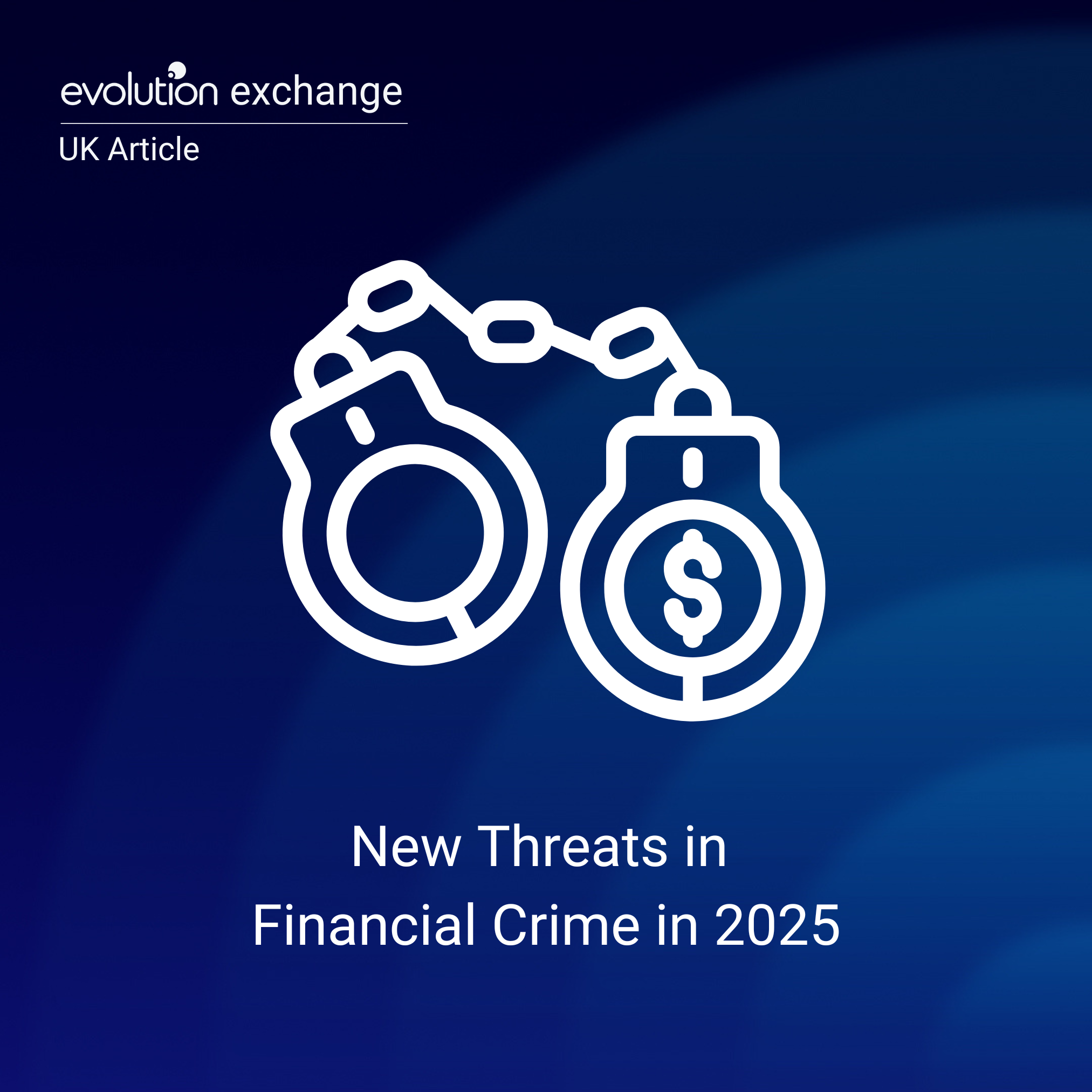As the financial landscape continues to evolve, so too do the threats posed by financial crime. With advancements in technology, the rise of digital currencies, and the ever-growing interconnectedness of global financial systems, criminals are adapting and finding new ways to exploit vulnerabilities. Here are some of the key financial crime threats expected to emerge or intensify by 2025:
1. Cryptocurrency-Related Crime
The rise of cryptocurrencies such as Bitcoin, Ethereum, and various altcoins has created significant opportunities for criminal activity. While cryptocurrencies offer many benefits, including decentralization and fast transactions, they also pose risks:
- Ransomware and Extortion: Cybercriminals are increasingly demanding payment in cryptocurrencies, making it harder for law enforcement to trace transactions. With ransomware attacks growing in frequency, organizations may be targeted with increasingly sophisticated demands for cryptocurrencies.
- Crypto-Money Laundering: The anonymity offered by decentralized digital currencies can facilitate money laundering activities. By 2025, this will likely become an even greater issue, as criminals may use sophisticated techniques to obscure the origin of illicit funds.
- DeFi (Decentralized Finance) Exploits: Decentralized finance platforms, which offer financial services without intermediaries like banks, will likely be targeted by hackers. These platforms are still evolving and may have vulnerabilities that criminals can exploit to siphon funds through hacks, flash loan attacks, and other means.
2. AI-Powered Financial Crimes
Artificial intelligence (AI) and machine learning are already playing a role in detecting and preventing financial crimes, but they also present new threats:
- AI-Driven Fraud: Criminals are using AI and machine learning to create more sophisticated fraud schemes. This includes automating phishing attacks, identifying vulnerabilities in financial systems, and creating deepfake videos or voice recordings to impersonate executives for fraudulent wire transfers (known as business email compromise).
- Synthetic Identity Fraud: AI tools can also be used to generate synthetic identities—fake identities created by combining real and fake data. These identities are often used to open accounts, apply for loans, or conduct other financial transactions that are difficult to trace. As AI technologies improve, so too will the complexity of these fraudulent identities.
- Predictive Attacks: Cybercriminals can use AI to predict vulnerabilities in financial institutions’ systems. AI can analyze transaction patterns, detect weak security protocols, and exploit emerging risks before they are addressed.
3. Deepfake and Voice Cloning Fraud
Advances in deepfake technology (the ability to create hyper-realistic, computer-generated images, videos, and audio) have made it easier for criminals to impersonate individuals and commit financial crimes:
- Deepfake Fraud in Financial Transactions: By 2025, we are likely to see more instances of deepfake technology being used to impersonate executives or board members, authorizing fraudulent transactions, or manipulating markets with fabricated news.
- Voice Cloning for Wire Fraud: Criminals can use voice cloning to mimic the voices of high-level executives or clients, enabling them to request wire transfers or manipulate financial institutions. This method has already been reported in several incidents and will likely become more prevalent as voice technology improves.
4. Biometric Data Theft
Biometric authentication (such as fingerprint scanning, facial recognition, and retina scans) is becoming more common in financial systems due to its security advantages. However, with more biometric data being stored and used, there is a growing risk of:
- Biometric Data Breaches: As financial institutions and governments store vast amounts of biometric data, cybercriminals will increasingly target these systems to steal sensitive personal data. Once biometric data is compromised, it cannot be changed like passwords, making it a particularly valuable target for attackers.
- Biometric Manipulation: Cybercriminals may develop tools that enable them to manipulate biometric systems, bypassing authentication protocols to access accounts or make fraudulent transactions.
5. Social Engineering and Behavioral Targeting
As technology becomes more integrated into everyday life, criminals are developing more advanced social engineering techniques that use personal data to manipulate individuals into making fraudulent financial decisions:
- Behavioral Targeting Using AI: Cybercriminals can leverage AI to analyze an individual’s online behavior, interests, and vulnerabilities. This enables more precise phishing and scamming attacks. By 2025, attackers may be able to tailor fraud attempts so accurately that it becomes much harder for individuals to distinguish legitimate offers from scams.
- Manipulation of Behavioral Finance: Fraudsters will increasingly target individuals based on psychological manipulation, exploiting cognitive biases and financial decision-making patterns. This could lead to more targeted investment fraud schemes, including Ponzi schemes, “pump-and-dump” scams in crypto markets, or fake investment opportunities.
6. Cross-Border Money Laundering and Terrorist Financing
Global financial systems are becoming more interconnected, making it easier for criminals to move illicit funds across borders. By 2025, we can expect to see:
- Complex Money Laundering Networks: Criminals will exploit international financial networks to move illicit funds more seamlessly. As laws tighten in one jurisdiction, criminals will shift operations to jurisdictions with looser regulations or exploit new financial technologies, like stablecoins, which offer less traceability than traditional cryptocurrencies.
- Terrorist Financing: The rise of digital currencies, including central bank digital currencies (CBDCs) and cryptocurrencies, will make it harder to track and trace terrorist financing. These funds can be moved quickly, making it difficult for law enforcement agencies to intercept transactions in real-time.
7. Environmental, Social, and Governance (ESG) Fraud
The growing interest in ESG investing and sustainability could attract criminal activity related to fraudulent greenwashing and financial manipulation:
- Greenwashing: As investors seek socially responsible investments, criminals may fabricate false claims of sustainability or ethical business practices to attract investments. This could involve creating fake environmental or social initiatives to mislead investors into funding unethical or non-sustainable operations.
- Fake ESG Reporting: Companies may also falsify ESG data or reports to attract investment, misrepresenting their efforts to address climate change, labor rights, or other social factors. This could mislead investors into making financial decisions based on inaccurate or misleading data.
8. Supply Chain and Trade-Based Financial Crime
Financial crime within global supply chains is expected to grow as international trade and business operations become more complex:
- Trade-Based Money Laundering: Criminals may exploit discrepancies in trade invoices and shipping documents to move illicit money across borders. This practice can be used to disguise the origins of illegal funds by over- or under-invoicing goods and services.
- Cyber-Enabled Fraud in Supply Chains: As more businesses adopt digital supply chain solutions, cybercriminals may exploit vulnerabilities in these systems to manipulate financial transactions or steal funds from both businesses and consumers.
Conclusion
In 2025, financial crime will likely be more sophisticated, complex, and difficult to detect. The integration of new technologies such as AI, cryptocurrencies, and biometrics will create both opportunities and challenges for criminals and law enforcement alike. To combat these evolving threats, governments, financial institutions, and businesses will need to invest in advanced detection technologies, improve cross-border collaboration, and educate the public on emerging fraud risks. The future of financial crime will require an adaptive and proactive approach to ensure financial systems remain secure in an increasingly digital world.































